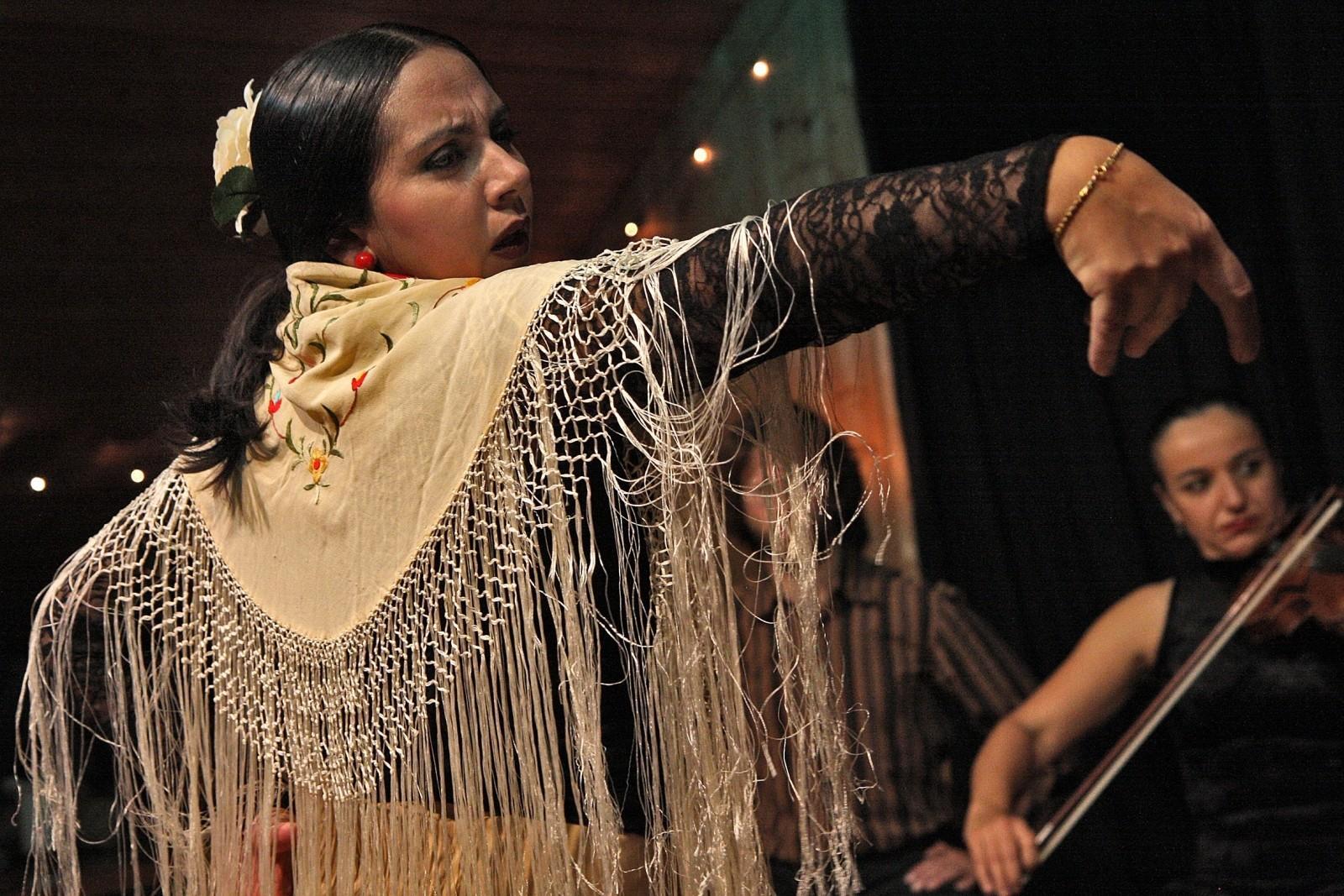Spain is one of the most widely spoken languages both in terms of native speakers and people learning it as a foreign language. With over 70 million people speaking Spanish as a second language, it's one of the most common languages for students to learn all over the world.
As for native speakers, Spanish is second only to China and while Chinese is predominantly spoken in China and by the Chinese diaspora around the world, Spanish is an official language of 20 countries including Spain and across Central and South America.
Spanish has the advantage that it's generally easier for native English speakers to learn than Chinese, Arabic, Japanese, Russian, and Korean. For one, it uses the Latin alphabet so you don't have to worry about learning an entire new writing system when you study it.
This is just one of the reasons Spanish is a popular choice. Though many students will learn Spanish at school, they can also learn Spanish with a tutor, study in a language centre, or teach themselves using online and offline language resources.
Around the world, most education systems will teach students just enough of a foreign language to get by in a country where said language is spoken. Every education system is different, but here, we'll look at how Spanish is generally taught around the world.

Learning Spanish from a Young Age
As learning languages is part of the New Zealand curriculum, students in primary schools have the opportunity to learn a foreign language. In most cases, learning any language starts with learning how to read and write it while also making basic conversation.
This means students are taught basic Spanish vocabulary (words and phrases in Spanish) and Spanish grammar (such as adverbs, adjectives, pronouns, syntax, conjugations, tenses, etc.) to get them started.

At this age, learning any foreign language needs to focus on practising speaking the language and having conversations. That said, it doesn't mean that students can't also learn about aspects of Spanish and South American culture such as literature, painting, history, geography, and politics to help bring the subject to life.
As language and culture are inseparable, as you learn Spanish, you'll naturally learn more about the culture of Spanish-speaking countries.
Learning foreign languages is also great for employability. Not only will it make it possible to work in countries like Spain, Mexico, Costa Rica, Argentina, Colombia, etc., but it also shows employers that you've mastered all the skills that come with learning a foreign language and are determined enough to do it.
This won't happen at primary school, but it is a good place to start and the sooner you start, the sooner you can reach fluency. Even if you don't start learning Spanish at primary school, it's never too late to start and you can always find a Spanish teacher to help you.
Learning Spanish and Studying Spanish-speaking Cultures
We've already alluded to the importance of culture when it comes to learning Spanish, but you can't learn any language without learning about the culture.
Spanish is the language of Cervantes, Picasso, Salvador Dalí, and Frida Kahlo, to name a few. It's spoken across a variety of wonderful countries from busy Spanish cities like Madrid and Seville to remote fishing villages in Mexico.
When students start learning Spanish in primary school, though, they'll learn to:
- Talk about their daily lives in Spanish such as daily routine, hobbies, etc.
- Use common formalities and everyday expressions.
- Study using Spanish-language resources.
In addition to these broader goals, students will also be expected to study:
- Common Spanish expressions relating to their routines including meals and food, telling the time, and talking about their family, jobs, transport, numbers, etc.
- Spanish-language media including literature, cinema, art, and music.
- Geographical terms so they can speak about trips and places in Spanish-speaking countries.
- Spanish-speaking cultures and their traditions: This can include famous monuments, traditions, and food.

For students with aspirations of making a career of their Spanish and studying it at university, they'll likely need to eventually broaden their studies beyond just what they're taught in primary and secondary school.
This can include regularly studying grammar and vocabulary, but also engaging with Spanish-speaking culture through art and media such as TV shows, music, cinema, and anything you can get your hands on that's in Spanish!

Learning Spanish as a Teenager
Some students won't study Spanish in their primary school and their language learning may cover another language. That doesn't mean that they'll never be able to learn Spanish, though. It's never too late to learn Spanish and secondary school students and teenagers can start learning Spanish and still become fluent.
While primary school Spanish is simpler and may include the occasional test, quiz, or exam, secondary school is where students will take their first real tests in Spanish.
Let's see the kinds of things that a secondary school student could learn about in their Spanish classes:
- The Spanish alphabet: Spanish still uses the Latin alphabet. The letters make different sounds in Spanish and there are also diacritics (often called accents) like the tilde (˜) over the letter "n". This combination is known as "Eñe" (roughly pronounced en-yay) and is uniquely Spanish.
- Spanish Punctuation: Spanish has its own letters and its own punctuation. For example, exclamations and questions in Spanish start with inverted question marks and exclamation.
- Times and Dates
- Prepositions, adverbs, connecting words
- Personal pronouns including the formal voice
- Numbers
- Adjectives
- Grammatical Tenses
- Fundamental Spanish verbs such as "ser" and "estar"
While it'll depend on your teacher and school exactly how much Spanish-speaking culture is involved in your lessons, it's quite common to also study the following in your lessons:
- Jobs using languages
- How Spanish is used around the world
- The most important places in the Spanish-speaking world
- Lifestyles and cuisine in Spanish-speaking countries
- Spanish-speaking media
- Famous works by Spanish-speaking artists
- Famous Spanish speakers
You could also look at other Spanish courses with a greater focus on culture if you'd like.

By their early teens, most Spanish students in the country should be more than comfortable expressing basic ideas in Spanish both verbally and in writing as well as understanding basic texts and conversations.
Don't worry too much if this isn't the case because you could always look to private tutors or extra Spanish classes to help you. Just make sure you find out how much Spanish lessons cost before you commit to them.
Choosing the right Spanish tutor is as important as finding one at the right price. Think carefully about what you want to learn, how you like to learn, and make sure that every potential Spanish tutor is aware of what you're after.
Most private Spanish tutors will adapt their lessons to you and what you want to learn anyway as long as you've made this clear to them. This isn't always the case in Spanish classes in school and is one of the main reasons students don't always learn as much Spanish as they want to.
Learning Spanish Beyond Secondary School
As with any subject, the longer you study it, the more advanced your lessons will become. By the time you reach the end of secondary school, you won't be bilingual, but you should be somewhere between a foundational and intermediate level in Spanish.
University or immersion should take your Spanish towards fluency, but before you can do this, you should be able to do the following (according to the NCEA Level 3 Achievement standard):
- Demonstrate understanding of a variety of extended spoken Spanish texts
- Give a clear spoken presentation in Spanish that communicates a critical response to stimulus material
- Interact clearly using spoken Spanish to explore and justify varied ideas and perspectives in different situations
- Demonstrate understanding of a variety of extended written and/or visual Spanish texts
- Write a variety of text types in clear Spanish to explore and justify varied ideas and perspectives

As with most Spanish testing around the world, New Zealand's Achievement Standards for NCEA Spanish focuses on the four main skills that make up language: reading, writing, listening, and speaking.
From primary school to university, students will work on these skills, building up a foundation in them when they first start studying the language. Initially, this involves very rudimentary expression using the most common vocabulary, simple present tenses, and basic opinions.
As Spanish students progress, they'll be able to add nuance and complexity to both their writing and speaking by broadening their vocabulary, learning new tenses and structures, and defending their opinions or justifying them.
All of these skills will also improve their passive language skills, making them able to understand more spoken and written Spanish. Generally, we understand more of a language than we can produce and our passive vocabulary is much larger than the active vocabulary we use, even in English. What this means is that you understand far more words and structures than you tend to use and as you improve your written and spoken comprehension in a language, you'll naturally improve your production.
To get the most out of learning Spanish, make sure that you prepare for your Spanish lessons. Whether you're in primary school or university, preparation is key to ensuring that you're learning in every minute of every lesson.
Learning Spanish with a Private Tutor
While learning Spanish in school will teach you the foundations, the amount of time spent studying a language isn't enough to gain fluency. Learning a foreign language takes hundreds of hours of study and regular practice just to become somewhat conversational.
One of the only ways to get the kind of practice you need to speak Spanish fluently is through tutoring or conversation classes. Immersion is another option, but most people can't just move to a Spanish-speaking country to learn the language.
Private tutors often offer an affordable way to regularly practise foreign languages and you can always look for local Spanish tutors or online Spanish tutors from Spanish-speaking countries.
As the world's second-most spoken language, you'll be spoilt for choice when looking for Spanish tutors and there are tutors for all levels and budgets. Shop around and you'll find someone who can help you with learning Spanish!
















